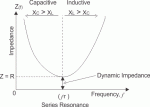digitaldragon
New member
I have been recording basic 2 track vocal karaoke covers in Reaper for a while now. I am currently using a 2i2, an sm57 with fethead, and a cheap acer laptop.
My problem is that the sound I hear coming from the sm57, even without any processing, doesn't sound as crisp and clear as it does in various YouTube mic shootouts and vocalists throwing up vids testing out the sm57 as a vocal mic. I thought initially that it's just me, or that maybe I'm just missing something and I need to tweak plugins or eq in Reaper to get the sound I want.
But even after moving the eq sliders around, and getting it to sound acceptable to my ears, it still sounds kind of "muffled". My final recordings just always seem to be missing the clearness of sound that I'm looking for. Could it be that the pre in the 2i2 isn't good enough?
I have a fethead boosting the db to 65 I believe, so volume isn't a problem, and I play with the gain and mic distance until I'm just out of clipping range. I got to thinking that maybe the laptop's soundcard may have something to do with it. Is this possible? Or does the 2i2 automatically act as the soundcard?
I have an xfigo soundcard and I'm wondering if this will be able to work in conjunction with the 2i2 to provide better audio for whatever goes into that sm57. I'm also planning on trying a condenser mic to see if it's just an sm57 issue.
From the examples I've heard, and the fact that a lot of artists have used it as a vocal mic, I assume it's just lack of knowledge on my part and I'm doing something wrong or need better equipment. Any other suggestions to improve the clarity of my recordings?
Thanks.
My problem is that the sound I hear coming from the sm57, even without any processing, doesn't sound as crisp and clear as it does in various YouTube mic shootouts and vocalists throwing up vids testing out the sm57 as a vocal mic. I thought initially that it's just me, or that maybe I'm just missing something and I need to tweak plugins or eq in Reaper to get the sound I want.
But even after moving the eq sliders around, and getting it to sound acceptable to my ears, it still sounds kind of "muffled". My final recordings just always seem to be missing the clearness of sound that I'm looking for. Could it be that the pre in the 2i2 isn't good enough?
I have a fethead boosting the db to 65 I believe, so volume isn't a problem, and I play with the gain and mic distance until I'm just out of clipping range. I got to thinking that maybe the laptop's soundcard may have something to do with it. Is this possible? Or does the 2i2 automatically act as the soundcard?
I have an xfigo soundcard and I'm wondering if this will be able to work in conjunction with the 2i2 to provide better audio for whatever goes into that sm57. I'm also planning on trying a condenser mic to see if it's just an sm57 issue.
From the examples I've heard, and the fact that a lot of artists have used it as a vocal mic, I assume it's just lack of knowledge on my part and I'm doing something wrong or need better equipment. Any other suggestions to improve the clarity of my recordings?
Thanks.
Last edited by a moderator:


